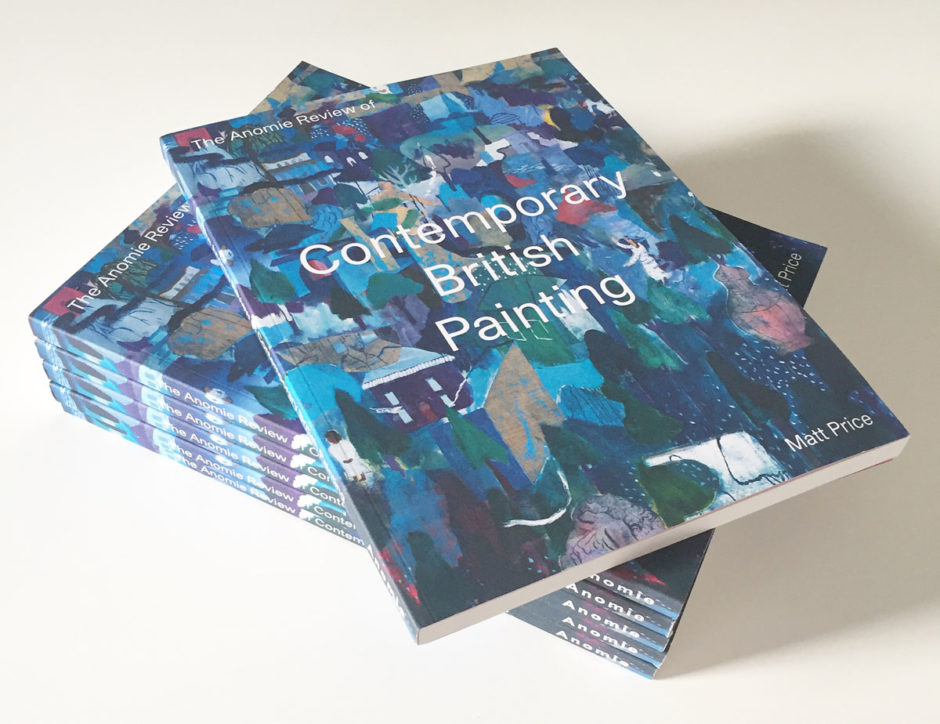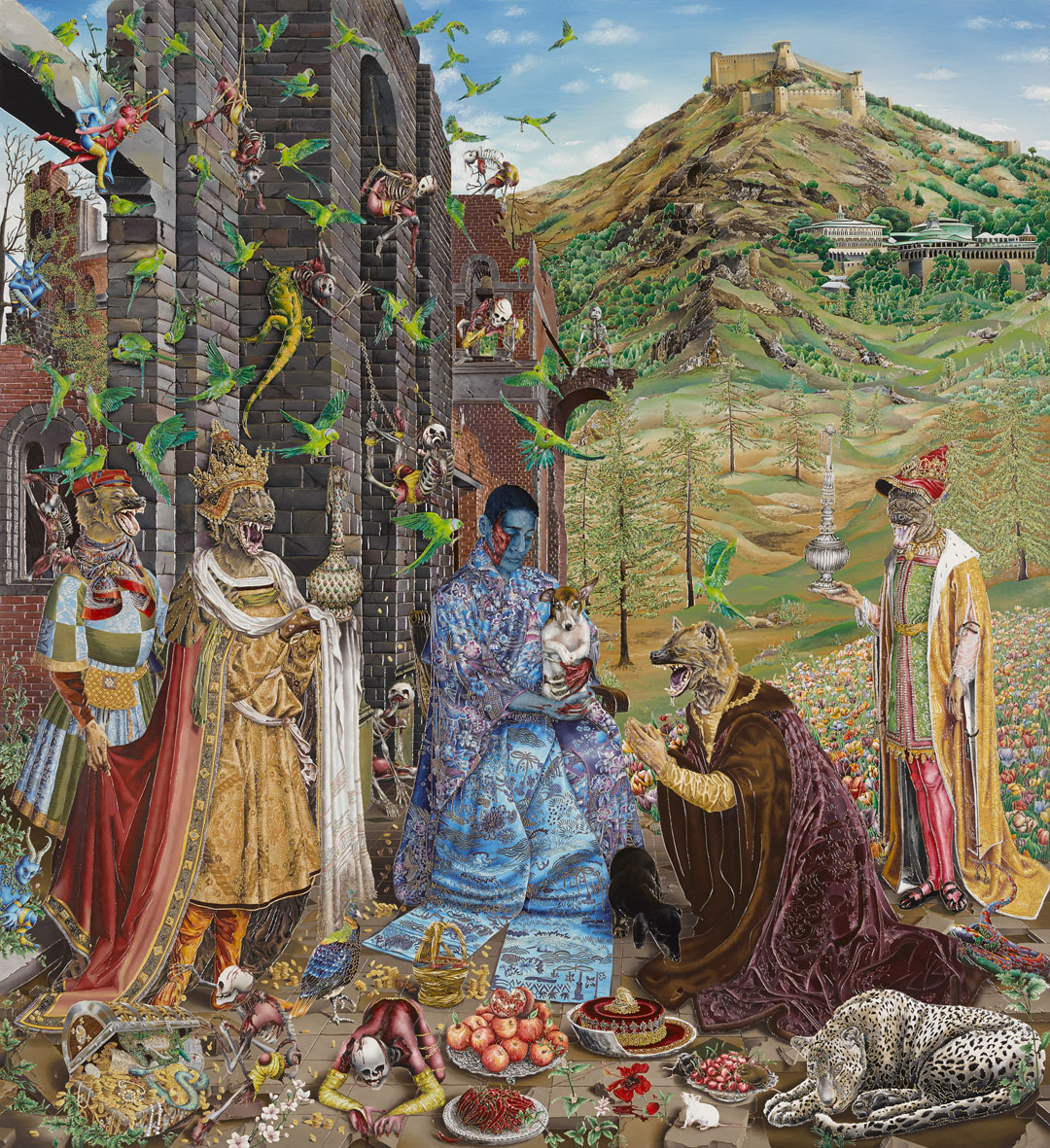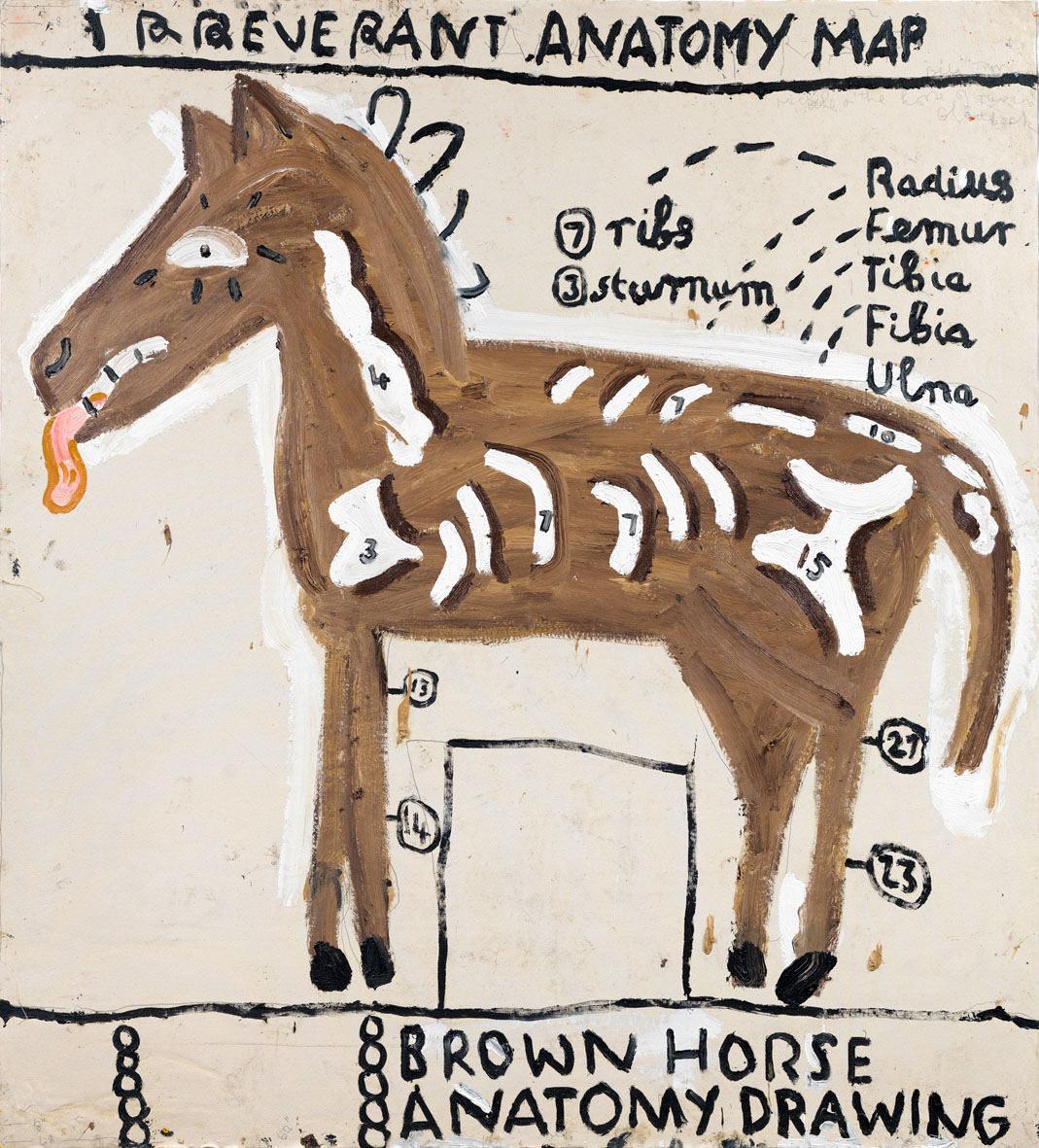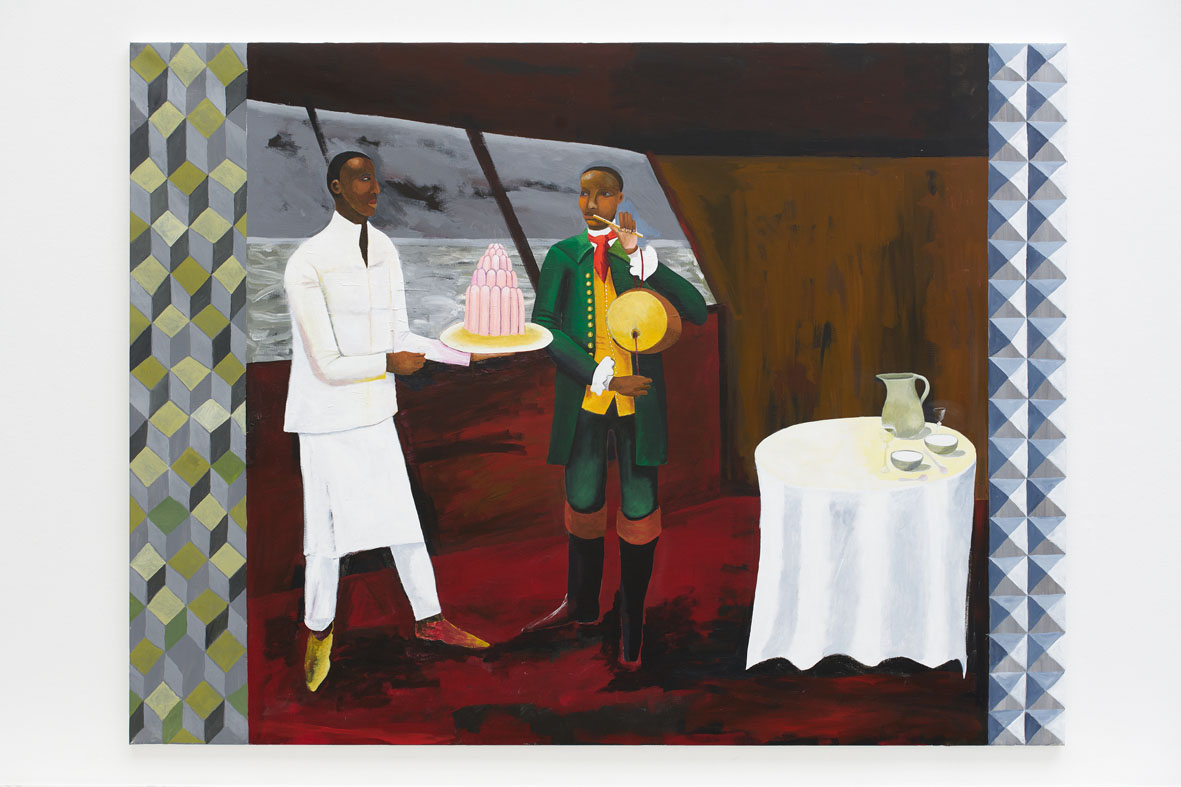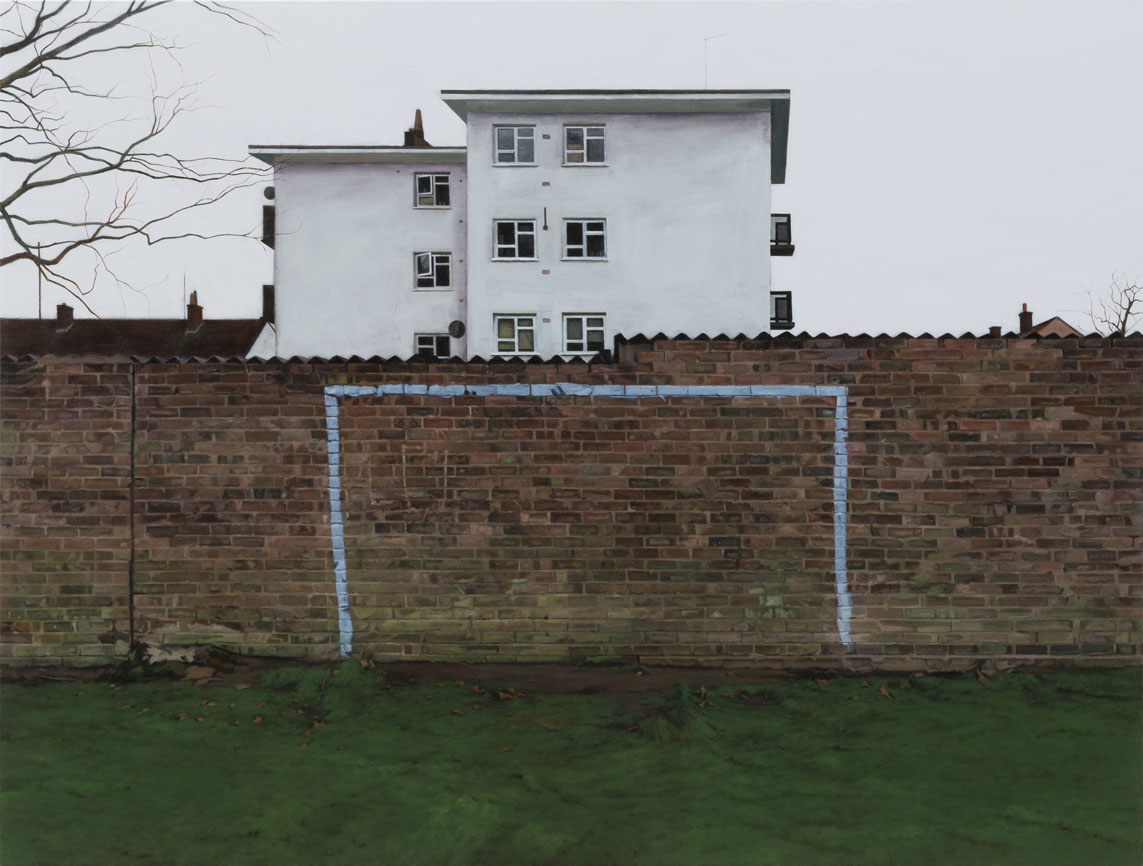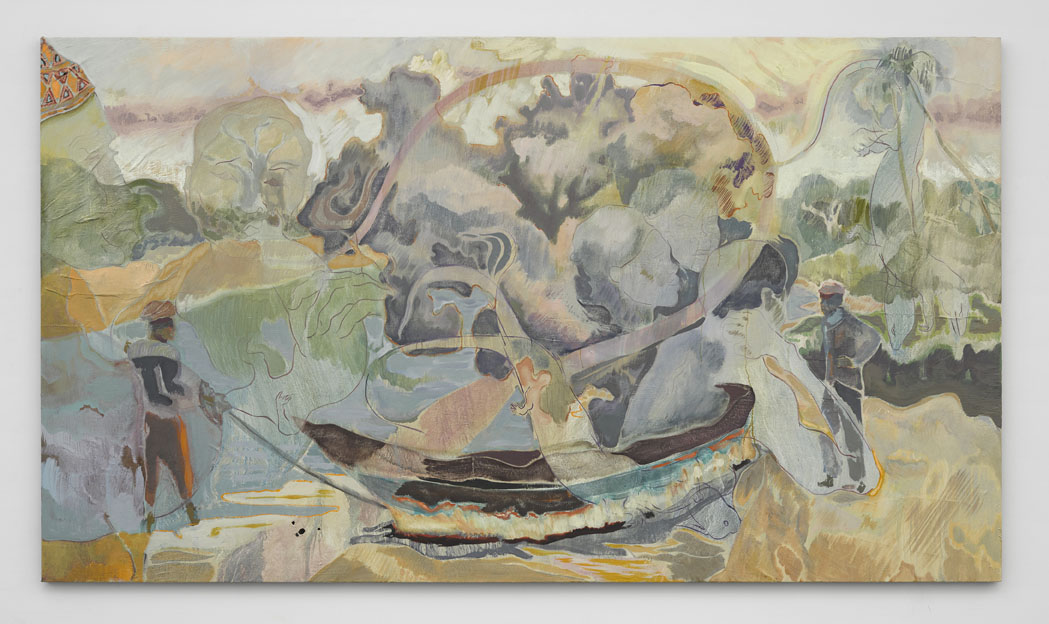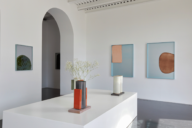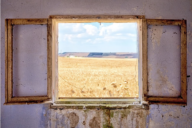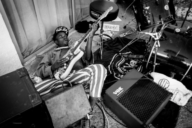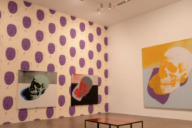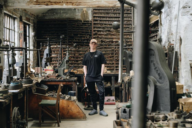THE ANOMIE REVIEW OF CONTEMPORARY BRITISH PAINTING
Here at Fused we couldn’t help but notice that there is a lot of excitement about painting in the gallery scene at the moment, so when we heard that long-standing Fused contributor Matt Price was compiling and writing a major new book about contemporary British painters, we thought we’d get in touch to find out more…
What’s the idea behind this new book, Matt?
Well, I wanted to make an anthology of contemporary British painting to reflect some of the great work that’s been made over the last couple of years by artists born or living in Britain. Thinking through different ideas for how to approach the selection of artists, I thought a useful way would be to only invite artists who staged solo exhibitions last year. I wanted it to be a snapshot of what’s going on now, so documenting and discussing solo exhibitions by the artists seemed a good way to show that.
Can you tell us about some of the artists featured who’ve had exhibitions in British museums and galleries?
One that instantly springs to mind is Raqib Shaw’s (pictured above) sparkling solo show at The Whitworth, University of Manchester, which brought together a number of the intricate and often quite challenging paintings by the Calcutta-born, Peckham-based artist along with some beautiful objects and works of art he selected from the collections of Manchester Museums. The artist even designed some wallpapers that were used in the exhibition design, and the installation photographs are just incredible.
Another greatly anticipated exhibition was Rose Wylie’s (above) ‘Quack Quack’ at Serpentine Galleries, which opened at the end of last year and ran through until February this year. She’s such an intriguing character and a completely uninhibited painter – her works can be very funny at the same time as offering a really thought-provoking commentary on modern life.
The anthology also features exhibitions by British artists that were staged abroad – can you tell us about a couple of these?
Yes, that’s right. The winner of last year’s Turner Prize, Lubaina Himid, (above) for example, had an impressive survey exhibition at the Badischer Kunstverein in Karlsruhe, Germany. As well as offering an opportunity to see some of her key works from the past thirty years or so, the exhibition also presented some of her recent series of paintings ‘Le Rôdeur’, which takes as its starting point a French slave ship that travelled from Africa to the Caribbean with a strange and horrific story to tell. Himid’s paintings depart far from the original story into a modern, almost theatrical space, raising questions about how Black lives today are still affected by the legacies of slavery and colonialism. And then there’s Lynette Yiadom-Boakye’s beautiful, brooding exhibition at the New Museum in New York, presenting her imagined and half-remembered human figures painted with a poetic, mysterious charm whilst simultaneously evoking a sense of normality and the everyday.
As well as these major museums and public galleries, there are other kinds of exhibition spaces featured in the book, too?
Absolutely. In addition to museums and public galleries, there are shows in private foundations, university spaces, independent venues and artist-led galleries, as well as many exhibitions in commercial gallery spaces.
What are some of the highlights from the commercial gallery scene?
I’d say that all of the exhibitions featured in the publication are highlights from last year in different ways, but one of the commercial gallery shows that I particularly enjoyed was Nick Goss’s immersive exhibition with gallerist Josh Lilley in Fitzrovia – immersive in a very literal sense as this particular body of work was in part inspired by a major flood in the Netherlands in the 1950s that affected the area where some of his family still live today. The paintings are like an imaginary, dystopic, Ballardian take on what London might be like if it was devasted by floods today. Then there was the show of eight paintings by Gillian Carnegie at Cabinet in Vauxhall Gardens – seductive, serene still lifes, interiors and black cats along with some understated yet totally beautiful portraits. George Shaw (pictrured above) – whom many people will know for his depictions in Humbrol paint of housing estates in Tile Hill in Coventry, where he grew up – presented a solo exhibition called ‘The Lost of England’ at Maruani Mercier in Brussels, and in the works there was a real sense that the artist has been thinking a lot about Brexit as he prepared for his show in a city so integral to the European Union project.
These artists all sound pretty well established in the art world – are there any up-and-coming artists featured in the anthology?
Yes, there are quite a few. The intention was to present artists at a variety of stages of their careers, from the most celebrated, high-profile figures right the way through to rising stars such as Nairobi-born, London-based Michael Armitage (pictured above), whose beautiful yet challenging exhibition ‘The Chapel’ at the South London Gallery, inspired by topical religious, political and cultural subjects in Kenya, was definitely a highlight of last year. Then there’s Caroline Walker, the London-based Scottish artist whose fascinating and beautiful series of paintings of women working in or visiting nail bars, was a sell-out success in Gwacheon, South Korea, in spring last year. There are also a small number of artists who are only very recently out of college, such as the highly promising Jadé Fadojutimi, who graduated from the Slade School of Art just a few weeks before her debut exhibition ‘Heliophobia’ with Pippy Houldsworth. She is bringing a real energy to abstract painting and is certainly one to watch.
Are there any new trends or styles in painting that have become apparent from compiling the anthology?
We are in a very liberated moment for painting – there is a real sense that artists feel free to explore whatever styles, languages and genres they wish to, and that curators, gallerists, collectors and critics are receptive to and supportive of that variety and freedom. I don’t think there is any one particular style that is defining British painting today, but there is a certain sense of joy and enjoyment in current painting that is in part reflected in the number of bright, colourful, witty, irreverent and fun works that are being made. There are some interesting references and responses to the digital age coming through, and to the mixing up of different visual modalities that seems connected to it. In some respects it feels very much like the blossoming of the postmodernity that everyone was talking about in the 1990s, but I would also say that there is a resurgence of ‘painterly’ painting at present – artists taking pleasure in the materiality of paint, its tactile properties, its physical qualities, and this is perhaps allied to a renewed fascination with modernist painting of the late nineteenth century and throughout much of the twentieth, as well as with different art histories beyond the Western canon. While image-making is as important as ever, this is also a great time for painting aesthetes who revel in the pleasure of visible brush marks!
We noticed there are more female artists than male in the anthology – was that a conscious decision?
This only really became apparent when the list of artists to invite was finalised, and I’m really pleased it’s worked out that way. It would be nice to think we’ve reached a watershed moment in terms of gender equality in British painting, or at least have entered a new phase in which more women have a genuine chance of becoming as prominent and as successful as their male counterparts. It just seems inconceivable that this is still an issue that needs to be fought for in this day and age – surely that battle should have been won and consigned to history by now. There’s still quite some way to go before it’s a level playing field, but it’s really great to see so many British women painters winning prizes, being offered solo exhibitions, being signed up by gallery representatives, and able to sustain successful careers from their work, so things are certainly looking up and heading in the right direction.
Do you think British painting is doing something that is not happening in other countries today?
Yes and no! I would say that while there are still exciting geographically localised schools and movements that pop up from time to time there is also a very international, globalised painting community today – everybody is so connected through social media that you can pretty much follow new works coming out of studios anywhere in the world. The connections, friendships and dialogues that are going on between painters in different countries in their tens of thousands every single day mean that artists’ peer groups are now no longer confined to their studio blocks or local art scene. Having said that, working on this anthology has made me appreciate more than ever the rich and complex fabric of Britain’s art infrastructure and the importance of having a world city such as London at its centre. It is maybe a delicate balance of public funding, charitable support, independent initiatives, artist-led activity, academic research and teaching, wider arts education and outreach, an engaged public, voluntary work, private patronage and a strong commercial sector that creates a healthy and thriving environment for the creation and reception of painting here. The arts, as with many sectors, are under increasing financial pressure, and I sincerely hope that we do not lose the balance of public, private and independent activity – and everything in between – over the coming years.
And finally, is The Anomie Review going to be the first of a regular series?
Well it would certainly be a lovely thing to do annually or biennially – it’s been such an enjoyable project to work on. It would be interesting and useful for exhibitions by British painters to be documented and discussed in a format such as this on an ongoing basis, though I think it will really depend how much interest there is in this first edition. As with many things, you need a critical mass for independently published books to be viable, but there are definitely enough great solo exhibitions by interesting British painters opening every week…
The Anomie Review of Contemporary British Painting, compiled and written by Matt Price, is published by Anomie and released on 20 September. 160pp, 280 x 210 mm, c. 160 images, RRP £30. Anomie-publishing.com
Image credits:
Raqib Shaw. The Adoration (After Jan Gossaert) 2015-16. Acrylic liner and enamel on birchwood, 177 × 162 cm. © Raqib Shaw. Courtesy of the artist and White Cube, London. Photo © White Cube (George Darrell).
Rose Wylie. Irreverent Anatomy Drawing, 2017. Oil on canvas, 182 × 165 cm. © Rose Wylie. Private collection. Courtesy of David Zwirner, London, and Choi & Lager, Cologne.
Lubaina Himid. Le Rodeur: The Cabin, 2017. Acrylic on canvas, 183 x 244 cm. Courtesy of the artist, Hollybush Gardens and Collection Museum Ludwig, Cologne. Photo: Stephan Baumann.
George Shaw. The Painted Wall, 2017. Humbrol enamel on canvas, 92 x 121 cm. © George Shaw. Courtesy of the artist and Maruani Mercier, Brussels.
Michael Armitage. Lacuna, 2017. Oil on lubugo bark cloth, 170 x 300 cm. © Michael Armitage. Courtesy of the artist and White Cube, Photo: White Cube (George Darrell).

